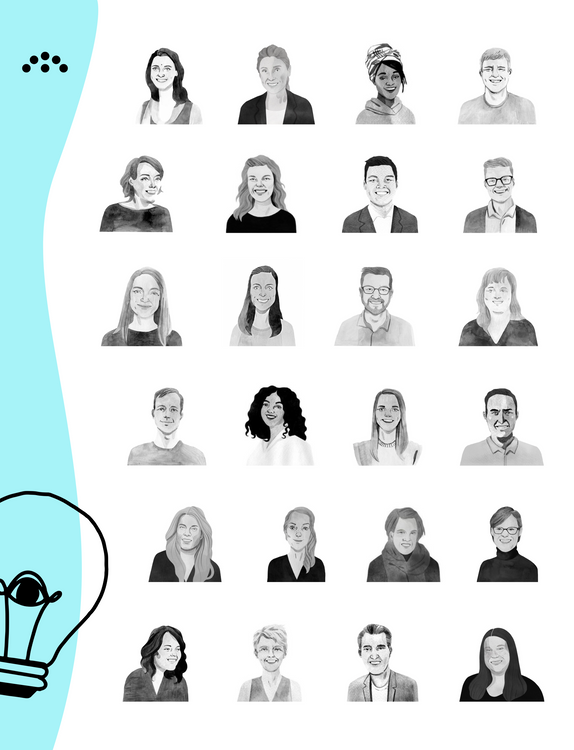B2B Business Models: An Exploration
The B2B business model is quite different from the B2C business model, in ways that require careful examination from anyone considering making the leap to B2B.
The B2B business model is quite different from the B2C business model. To anyone who has not studied business, the distinction is obvious at a surface-level. However, the biggest variances are below the surface - in the supply chain, in price negotiation, and in distribution, to name a few. The implications of these dissimilarities are so far-reaching, in fact, that they require careful examination from anyone considering making the leap to B2B.
Let’s take a closer look.
What is the B2B Business Model?
In the B2B, or business-to-business model, businesses exchange products, services, or information with each other. The transaction might be between a manufacturer and wholesaler, or a wholesaler and retailer. In any case, the business transaction takes place between companies instead of between a company and consumer. In both cases, each business benefits in some way.
For instance, a company might purchase raw materials necessary for use in manufacturing its product. Once manufactured, the company sells the finished product to a wholesaler. Both transactions are B2B - one business is purchasing and/or selling a product to/from another business.
What is the Difference Between B2B and B2C?
In the B2C, or business-to-consumer model, a business sells its products or services directly to consumers. In this model, the business is closer to the consumer, interacting with them directly to support the use of their product or service.
Types of B2B Business Models
Customer-centric
A customer-centric business model is one in which company A sells its product and provides service to customer companies B, C, and D, who use it. Businesses that follow this model seek to distinguish themselves from competitors by providing a superior product and service that gains them brand loyalty over time. For instance, Microsoft Office sells its software to businesses, then relies on the strength of the software itself, and Microsoft’s ability to support its use through customer-centered relationships, to stimulate brand loyalty.
In this model, company A acts as a supplier for company B. Most often, company A has control over the pricing and inventory of the products it sells and the marketplace through which it sells its products to other businesses.
Buyer-centric
Businesses that utilize a buyer-centric business model are often large corporations with extensive purchasing power. In this model, company A is looking to procure products and has its own online marketplace or portal where it invites suppliers (companies B, C, and D), to put up bids for its business.
For example, a corporation may set up an online portal to accept bids for shipping and logistics services in a certain region. Bidders (sellers of shipping and logistics services) will enter quotes in the online portal; the corporation (buyer of services) will typically proceed with the bid that is most profitable for the business.
Intermediary-centric
In an intermediary-centric business model, an intermediary business provides a platform for buyers and sellers to come together, interact, and develop a business relationship. The intermediary charges a fee for providing a platform that brokers the relationship. The intermediary’s payment may come in the form of a membership fee, transaction fee, or a commission on the value of the deal that is brokered between the two entities.
Alibaba, the Chinese e-commerce site, is an example of an intermediary-centric business model in practice.
B2B Business Model Advantages
Large Average Deal Size
B2B businesses can grow revenue by closing a small number of high-value sales; whereas, a B2C business typically must close hundreds, thousands, or even millions of individual sales to see significant revenue growth. While large deals between businesses often stimulate a collaborative mindset when it comes to distribution decisions, the deals themselves are costly and time-consuming, placing a premium on reliable partners. Accordingly, when businesses find mutually beneficial solutions to their challenges, long-term relationships and loyalty ensue.
Long-term Relationships
Due to the long sales cycle, it can be difficult, time consuming, and costly, for a business customer to leave its business supplier. The customer relies on the supplier’s ability to produce a quality product or service; the supplier purchases raw materials on the understanding that the customer will purchase the finished product. The shared risk assumed by both parties in a B2B transaction strengthens the relationship. Stability is valued by both. Contracts tend to last a year or more, include guaranteed pricing, and terms are negotiated up front to reduce the risk of surprises.
While B2C customers may leave one retailer for another without much thought, B2B customers are less likely to do so.
Differentiated Product/Service Offering
B2B companies strengthen their market position and reduce risk by providing specialized services and customized products to valued customers. Consider the case of a supplier who customizes a widget for their customer. The customer now has a unique product to bring to the marketplace and the supplier has become a valued business partner in the process.
In contrast, B2C companies tend to mass produce undifferentiated products that will appeal to a variety of potential customers. In doing so, they risk creating products that will appeal to no one.
Lower Marketing Costs
B2B businesses target their marketing spend to a few specific individuals who hold decision-making authority at select companies. In contrast to B2C companies who may invest heavily in social media and outdoor advertising campaigns, B2B businesses invest in hiring quality staff who will maintain or enhance their brand’s image and status in the marketplace.
B2B Business Model Disadvantages
Extended Sales Cycle
While consumers can make purchasing decisions based on their short-term or immediate needs, the B2B sales cycle can be months or even years long as businesses look to sustain their growth over time. Businesses manage cash flow closely while looking downstream to when they will get a return on their investment; if they see a gap in time, they may wait to buy until the last moment to reduce inventory holding costs.
Multiple Decision-Makers
In a B2C transaction, the individual has 100 percent authority to make a purchasing decision. In the B2B business model, multiple decision makers often must be consulted through processes and timelines unique to their business.
Limited Competitive Market
The B2B market is smaller than the B2C market with fewer companies competing for market share. In the B2B business model, buyers hold the power; losing just one buyer can be devastating for a business. Because B2B buyers buy in bulk, they are accustomed to negotiating for the best possible price, have specific requirements that stretch the supplier too far, or demand extra services.
Accordingly, B2B is risky for small and mid-size companies. Finding and retaining a competitive advantage is difficult, and innovating when the marketplace demands it is costly.
Requires Greater Investment
B2B companies must often provide proof, warranties, or guarantees of their ability to provide the product or service. This may require costly duplication or redundancy of systems or people, or insurance with expensive premiums and stipulations. The failure of one business in the B2B supply chain can have catastrophic downstream consequences on other businesses, making for higher upfront costs and higher barriers to entry.
B2B business models are distinct from B2C business models in many key ways. Setting a B2B business up for success requires being mindful of these differences and making accommodations for them.
If you need help putting together a strategy for your B2B or B2C business, one of our Expert Partners would love to speak with you. Contact info@openeye.email for more information!
- Author
- Anne Shoemaker
- Published
- 2023/01/17
- Consultants
- Expertises
- Strategy and Consulting
- Coaching
Get in Touch with Us.
We’re here to help and eager to get started.

